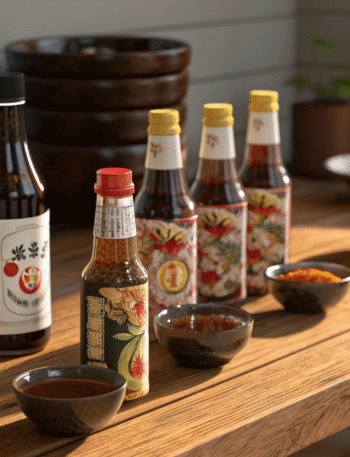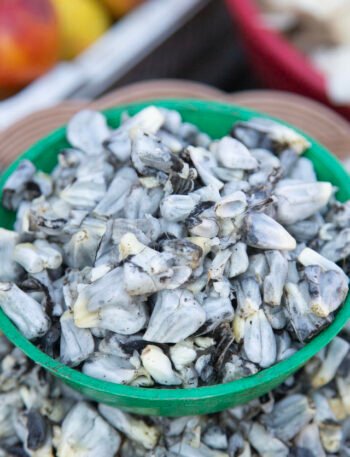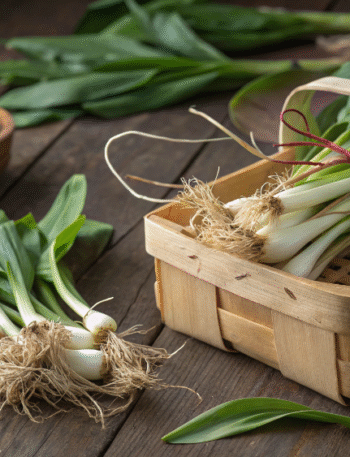Why Searing Meat Isn’t About “Locking in Juices”
You’ll often hear that searing meat is essential to “lock in the juices.” That idea has never really convinced me. Searing might add structure or texture, but as for sealing in moisture? Not exactly.
That said, I absolutely believe in searing meat, but for a very different reason.
When done right, searing creates complex, savory, umami-rich flavors thanks to the Maillard reaction. That deep, browned crust is essential, especially when you’re building a stew, braise, or even a burger.
In fact, it’s so important that I still remember the moment I first got it wrong. Back in culinary school, a chef asked me to brown some ground beef for a dish we were making. I tossed some ground beef into a large sauté pan, turned the burner on, and waited. A few minutes later, he asked how it was going. I proudly showed him the pan. He frowned, looked at the pale, steaming meat, and barked, “That meat’s not brown, it’s gray.” Then he showed me the proper way.
I’ve never forgotten that lesson. You need heat. Real heat. The meat should sizzle strongly when it hits the pan. And you also need patience. These days, I use an infrared thermometer to know exactly when the pan is ready (around 400–450°F for a good sear), but you don’t need gadgets. You can watch for the oil to shimmer and start pulling away from the surface of the pan. Once the meat hits, leave it alone. Resist the urge to stir right away. Let it make contact, build that crust, and only then give it a flip or stir. That’s where the flavor lives.
There are ways of helping this process. You can add a little sugar to a rub if you are using one. Additionally, many Chinese restaurants employ a technique called velveting, where baking soda is added to the meat for a few minutes and then rinsed off before searing.
Kitchen Trick: Compound Butters That Do All the Heavy Lifting
If you’ve never made compound butter, you’re missing out on one of the simplest ways to add instant flavor and depth to just about anything: grilled meats, vegetables, pasta, and even eggs. All it takes is a stick of good-quality butter, softened to room temperature, and whatever flavor boosters you have on hand.
Think black garlic, fresh or dried herbs, citrus zest, ground spices, smoked salt, chopped shallots, or a splash of wine. Mix all the ingredients, then shape them into a log using parchment or plastic wrap. Store the log in the fridge or freezer. When you need a quick burst of flavor, slice off a coin-sized piece.
One restaurant kitchen I worked in had this large container of compound butter made with red wine, roasted garlic, shallots, and rosemary. It looked like bubble gum, deep pink from the wine, but the aroma was unreal. When a steak came off the grill, we’d drag it through that butter right before plating. It didn’t just add richness; it glazed the steak, gave it a shine, and pulled every bit of charred flavor into a deeper place.
You don’t need a grill line to do the same thing at home. Here are a few compound butter combos to try:
-
Black garlic, miso, and chives: amazing on roasted mushrooms or chicken thighs.
-
Smoked paprika, lemon zest, and parsley: bright and earthy for fish or vegetables.
-
Red wine, shallots, and rosemary: a classic for steaks or burgers.
-
Dill, horseradish, and Dijon: Great with grilled salmon or boiled potatoes.
-
Or use your imagination!
Once you make one, you’ll wonder how your kitchen ever ran without it.
This Week’s Ingredient Spotlight: Black Matcha
The bold, roasted cousin of traditional matcha
If you’ve only had bright green matcha, you’re in for a surprise. This week, I’ve been sipping on something new: black matcha, a finely ground powder made from fully oxidized black tea leaves instead of green. It’s rich, malty, and has notes of cocoa and toasted grains. No grassy aftertaste, just smooth, roasted depth.
Black matcha whisks up just like its green counterpart but tastes closer to a bold black tea or light coffee. It’s fantastic in a latte, but also works beautifully in smoothies, baking, and even oatmeal.
💡 Pro tip: Stir a spoonful into warm milk with a touch of honey. It’s like a tea-based hot chocolate—but earthier and more complex.
Want to learn more? I break it all down in this week’s blog post, including how it’s made, where to buy it, and why it might be your new favorite pantry powder.
👉 Read the full post on black matcha
Until next time, happy cooking from all of us at Modern Cooks Digest!





